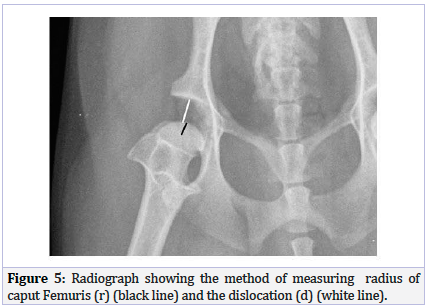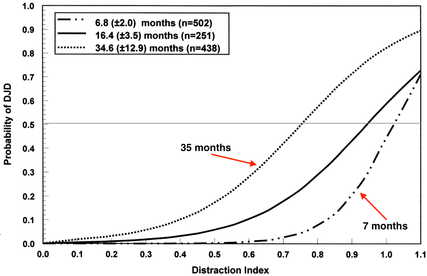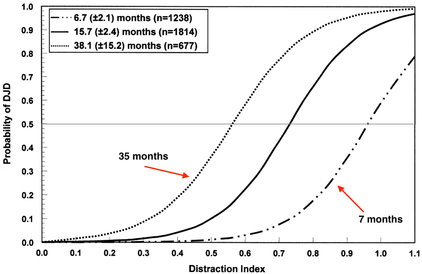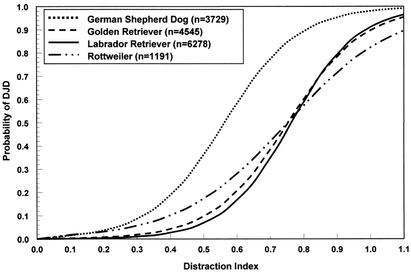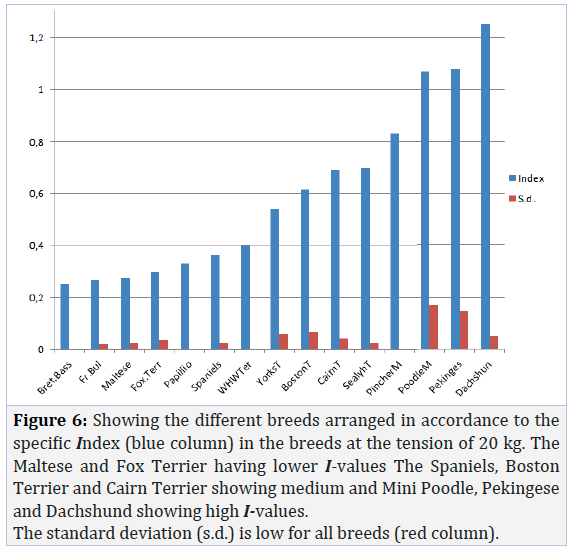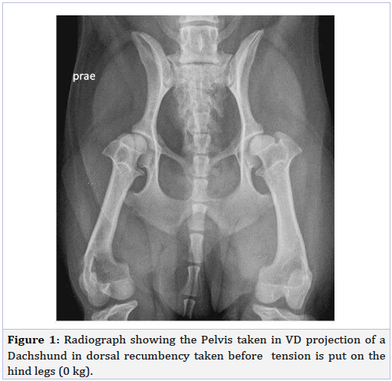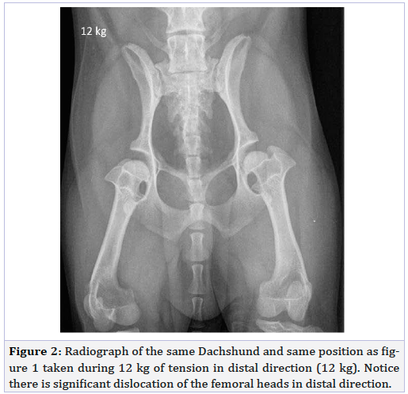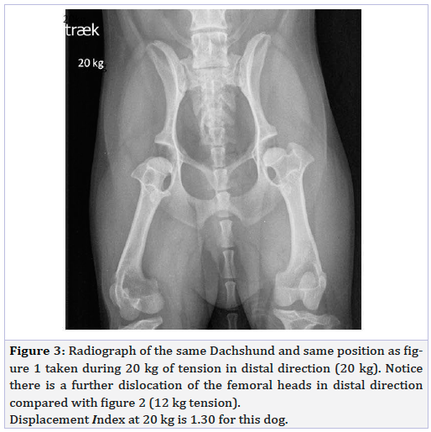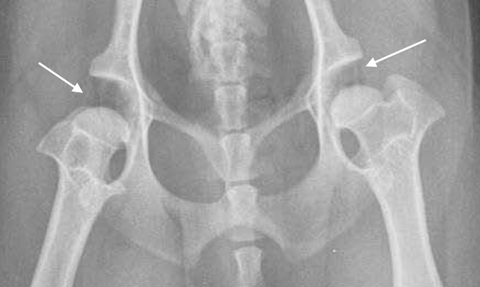| The risk of developing hip dysplasia is closely related to hip laxity, which is the degree to which the head of the femur can be displaced from the hip socket. In a normal dog, the head of the femur fits snugly into the cup that forms the socket (acetabulum) of the hip joint. In a dog with dysplastic hips, the acetabulum is deformed and shallow, the fit with the head of the femur is poor, and subluxation (partial dislocation) of the hip is possible. Hip laxity appears to be a necessary condition for the development of dysplasia or degenerative joint disease (DJD). However, there are differences among breeds in the probability, timing, and degree of development of DJD. |
Compare these data with those for the German Shepherd Dog (GSD; below). For this breed, the curves are shifted to the left. By 35 months, a GSD with a DI of only 0.55 has a 50% risk of DJD (versus 0.75 for the Rottweiler above), and the DI at 50% risk for 35 month old dogs is about 0.7, compared 0.95 for Rottweilers.
German Shepherd Dog
In fact, at all ages, the probability of DJD in GSD is greater than in the other breeds that have been examined at > 24 months old (the line for GSD is shifted to the left relative to other breeds; below).
The bottom line here is that breeds vary in their sensitivity to hip laxity in the development of degenerative joint disease. A Labrador Retriever with a distraction index of 0.5 has a low risk of DJD by 24 months (about 10%), while the same DI for a GSD is associated with a 40% risk of DJD by the same age. A DI of 0.5 presents a relatively low risk of DJD in a Rottweiler or Golden Retriever (about 10%), but a significant risk (40%) in a GSD.
The degree of displacement in the breeds with the highest DI is really quite remarkable. This is a series of radiographs of a Dachshund, first in resting position (top left), then with distraction resulting from 12 kg (top right) and 20 kg (center, below) of tension.
Unfortunately, the situation for breeders wishing to reduce the incidence of hip dysplasia remains problematic. The best options remain consideration of the phenotype of related dogs (as in Estimated Breeding Values), and a genomic rather than marker-specific approach to identify genetic risk using thousands of markers (Guo et al 2011).
| The genetic architecture of complex diseases like CHD differs fundamentally from that of monogenic disorders. Whereas the latter, by definition, are due to a few genetic changes with high penetrance, the former result from the interplay of a large and unknown number of environmental and genetic factors, most of which have small effects...Instead of basing CHD prediction upon a small number of pre-selected markers, Guo et al. ...proposed the inclusion of all available genomic information in a prognostic model, an approach that recalls strategies in livestock and crop breeding programs for quantitative traits alluded to above. In their `agnostic' approach, all SNPs on a given chip that turn out disease associated in a `learning population' are eventually included in the CHD risk calculated from the genetic profiles of other animals. (Manz et al 2017). |
Arnbjerg J. 2017. Hip joint laxity in small dog breeds: a radiological study. SOJ Vet Sci 3(1): 1-5.
Guo G, Z Zhou, Y Wang, K Zhao, L Zhu, G Lust, and others. 2011. Canine hip dysplasia is predictable by genotyping. Osteoarthritis Cartilage 19(4): 420-429. .
Manz E, B Tellhelm, & M Krawczk. 2017. Prospective evaluation of a patented DNA test for canine hip dysplasia (CHD). PLOS ONE 12(8): e0182093. https://doi.org/10.1371/journal.pone.0182093
Smith, GK, PD Mayhew, AS Kapatkin, PJ McKelvie, FS Shofer, & TP Gregor. 2001. Evaluation of risk factors for degenerative joint disease associated with hip dysplasia in German Shepherd Dogs, Golden Retrievers, Labrador Retrievers, and Rottweilers. JAVMA 219 (12): 1719-1724.
ICB's online courses
*******************
Join our Facebook Group
ICB Breeding for the Future
...the science of dog breeding
*******************
Visit our Facebook Page
ICB Institute of Canine Biology
...the latest canine news and research
